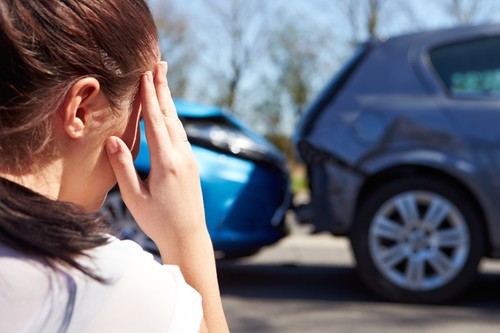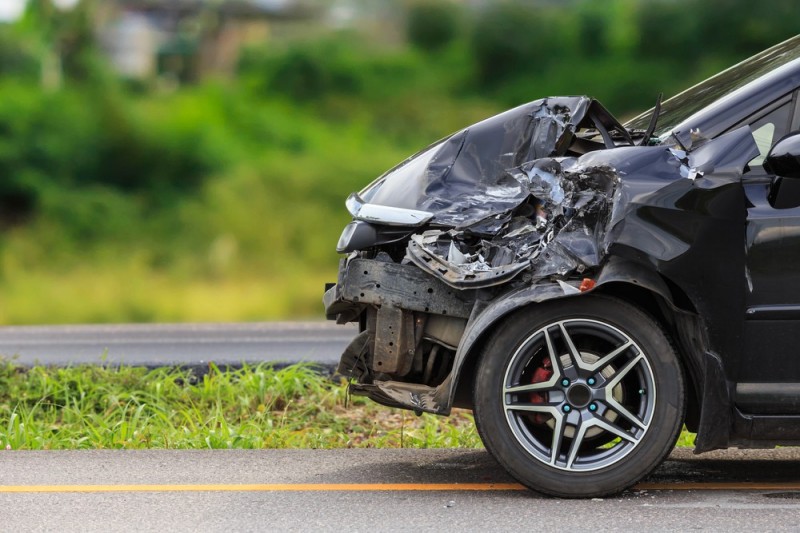How to Respond After a Car Accident

Car accidents are the worst. Even when they’re minor, they can disrupt your whole day—and in a stressful situation like that, it can be hard to keep your cool. The last thing you want to happen (well, besides being in the accident in the first place) is to be unprepared. The first step is to make sure you know what to expect, and what’s expected of you—not following the recommended protocol by doing and saying the wrong things can cost you serious time and money.
So, you’re driving home from work one day (or more like crawling home, because you’re probably stuck in traffic). The traffic is bumper to bumper, and the person behind you doesn’t step on their brakes in time, and WHAM—you lurch forward. Luckily, you were far enough from the person in front of you that you didn’t rear end them, and you weren’t injured. Now what?
Dick Hannah Vancouver Collision Center offers four critical pieces of advice:
- Turn on Your Hazards.
If your car is still safe to drive and moveable (like in the above situation), first turn on your signal and pull over to the side of the road—or wherever it is safe to do so. The other driver involved in the accident should do the same. Then, turn on your hazards.
Hazard lights are extremely important—if you’ve never used them before, now is the time to learn. Hazard lights turn on both of your blinkers at the same time, and they will flash at constant intervals (like your turn signals). These lights indicate to all other cars that something’s wrong, and that your car is a temporary hazard or obstruction. The standard symbol for your hazard lights is a red triangle, usually located on your car’s dashboard.
- Call 911
Once you’re safely out of traffic and on the side of the road, turn off your car and call 911 or your local police department. Even if no one is injured, it’s a good idea to call and file a report explaining what happened; you’ll be covering your bases in case the other driver tries to say something happened that didn’t. Also, be sure to ask how you can get access to a copy of the report later; your insurance company’s going to need it.
- Exchange Insurance Information and Take Pictures
After you’ve called and filed a report, make sure that you swap insurance information with the other driver. If you have a smartphone, take a picture of their insurance card and their driver’s license, and provide yours to them as well. This is the most important part of any accident; this will allow your insurance company to contact the other driver’s insurance company, and they can hash out the details of who pays for what damages.
Take pictures of your car, the other driver’s car, and any damages. Also, don’t forget to take down the name and numbers of any witnesses and to keep notes of any important information (details of the accident, things you noticed, potential damages unseen, etc.).
- Be Careful of What You Say
Even if you’re at fault and feeling some intense guilt (dropped a French fry in traffic and looked down for a split second to grab it?), don’t mention it. Try to stick to your own personal account of what happened, and don’t immediately apologize or admit any fault. Of course, this doesn’t mean you shouldn’t be cordial and cooperate—being unpleasant or difficult can only make the experience worse, and it doesn’t look great to the insurance company when reviewing the accident. Also, don’t agree not to report the accident even if it’s seemingly insignificant—you never know what the true damage to your car or yourself could be in the moment.
After you’ve followed the necessary steps and precautions, it’s time to go home and call your insurance agent. This is just an example of a very basic fender bender—in other cases, especially those that involve injuries or extreme damage to your car. The protocol is essentially the same, but the stakes may be higher.
In any degree of accident, it’s always a good idea to have a strategy. Don’t be afraid to write down some simple steps to remember in the heat of the moment.
Accidents are high-stress situations, and adrenaline will be pumping. Above all, don’t forget to breathe! With a little bit of planning and preparedness, you can keep your cool during your next fender bender, and hopefully make an overall unpleasant experience a little more bearable.
Like this content? Let us know! We work hard to provide relevant information to automotive consumers in the Vancouver, WA area.











Social